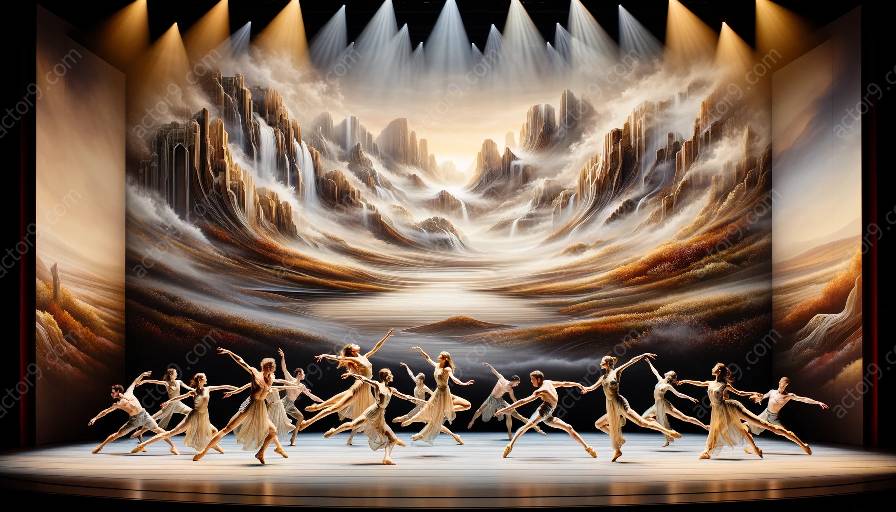Physical theatre choreography is a powerful medium that goes beyond movement to tell stories, convey emotions, and captivate audiences. In this comprehensive exploration, we'll delve into the seamless integration of storytelling in physical theatre choreography, its impact, and relevance in the world of physical theatre.
The Essence of Physical Theatre
Physical theatre is a form of performance that emphasizes the use of the body as a means of expression. It is a collaborative form involving playwrights, actors, directors, and choreographers, with the main focus being storytelling through physicality and movement. The power of physical theatre lies in its ability to transcend linguistic and cultural barriers, connecting with audiences on a visceral level.
The Role of Choreography in Physical Theatre
Choreography in physical theatre serves as the backbone of storytelling. It encompasses a wide range of movement techniques, including but not limited to dance, mime, acrobatics, and gesture. Choreographers in physical theatre meticulously craft movements that not only showcase physical prowess but also convey the essence of characters, emotions, and narratives.
Integrating Storytelling in Physical Theatre Choreography
Storytelling in physical theatre choreography is a multifaceted process that intertwines movement, narrative, and emotions. It enriches the performance by imbuing each movement with a layer of storytelling. Choreographers achieve this through the use of symbolism, gesture, and physical metaphors, effectively communicating complex narratives without the reliance on spoken language.
Emotional Resonance through Movement
One of the defining aspects of physical theatre choreography is its ability to evoke emotions through movements. Choreographers meticulously design sequences that capture the essence of characters and their emotional journeys. By embodying the internal struggles, conflicts, and triumphs of the characters, the choreography becomes a poignant vehicle for emotional storytelling.
Narrative Arcs and Physical Expression
Physical theatre choreography seamlessly weaves narrative arcs into movement sequences. Each movement becomes a thread in the intricate fabric of storytelling, conveying plot developments, character interactions, and thematic elements. The choreography acts as a visual language that speaks volumes, engaging audiences in a thought-provoking and immersive storytelling experience.
Impact on the World of Physical Theatre
The integration of storytelling in physical theatre choreography has significantly influenced the dynamics of the art form. It has expanded the possibilities of expression, allowing for a deeper exploration of themes and narratives. Moreover, it has contributed to the accessibility and inclusivity of physical theatre, making it resonate with diverse audiences across the globe.
Pushing Boundaries of Creativity
Physical theatre choreography that incorporates storytelling has pushed the boundaries of creativity within the art form. It has encouraged choreographers to experiment with innovative movement vocabularies, collaborative storytelling techniques, and interdisciplinary approaches. This continuous evolution enriches the artistic landscape and keeps physical theatre relevant in contemporary society.
Engaging Diverse Audiences
Story-driven physical theatre choreography has the power to engage and resonate with diverse audiences, transcending linguistic and cultural barriers. Its universal appeal draws people from various backgrounds into the captivating world of physical theatre, fostering empathy, understanding, and appreciation for the art form.
Conclusion
Physical theatre choreography is a compelling form of artistic expression that intertwines movement and storytelling to create immersive and thought-provoking performances. The seamless integration of storytelling in physical theatre choreography not only enriches the narratives but also serves as a bridge between performers and audiences. Its profound impact resonates in the world of physical theatre, shaping the evolution of the art form and inviting individuals to experience the transformative power of embodied storytelling.




































